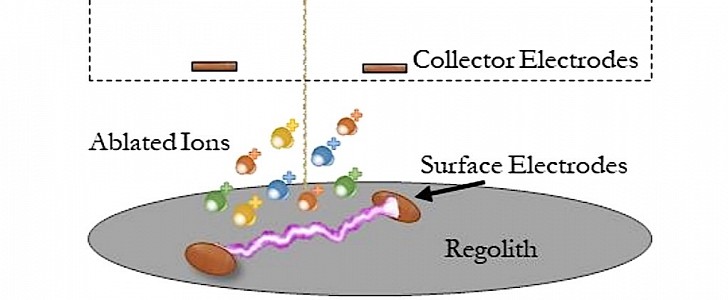Sending enough resources to an alien world to allow its proper and in-depth exploration is the biggest challenge for space programs. This is why, for all intents and purposes, in-situ resource utilization (ISRU) is the Holy Grail of this human activity.
NASA has long decided this is the way to go for the advancements of its plans. Back in 2018, the agency announced it had selected ten companies that are to conduct initial research into the possibility of ISRU, opening the doors not only on expanded exploration activities, but also on mining asteroids, for instance.
The upcoming Artemis missions, and more specifically the planned base on the Moon, will have no choice but to rely on ISRU if they are to succeed.
At the end of February, NASA announced the names of 16 technology proposals that are to be funded through the NASA Innovative Advanced Concepts (NIAC) program. Among them is a project developed by the University of Texas, El Paso, and called ablative arc mining.
The biggest challenge ISRU hardware has to face is the ability to extract from the alien world all the materials needed for whatever mission, using the same technology. Technically, one would need a different solution for the extraction of water, propellants, and building materials, but the ablative arc mining should be capable of doing it all.
Using electric arcs, the hardware is supposed to create free ionized particles that can then “be sorted by mass into material groups and transported to a relevant collector by electromagnetic fields.”
The Texan idea comes in the form of a mobile surface crawler that houses the ionizing ablation arc, electromagnetic transport and sorting hardware, and collector modules, making it a sort of all-in-one solution. Amelia Greig, the brain behind the idea, envisions a system that could simultaneously extract water, silicon, and nickel.
“Development of ISRU mining architectures are a necessary component for enabling long-term human exploration missions to the Moon or Mars. An ablative arc mining system that extracts and captures multiple volatile constituents in a single system offers significant improvements over other systems that collect only one constituent at a time,” the scientist says.
NASA is funding the project for the next nine months, and depending on the outcome of the research it may choose to move forward with it in Phase II. Still, there is no certainty the agency may consider this for a possible mission to another world.
The upcoming Artemis missions, and more specifically the planned base on the Moon, will have no choice but to rely on ISRU if they are to succeed.
At the end of February, NASA announced the names of 16 technology proposals that are to be funded through the NASA Innovative Advanced Concepts (NIAC) program. Among them is a project developed by the University of Texas, El Paso, and called ablative arc mining.
The biggest challenge ISRU hardware has to face is the ability to extract from the alien world all the materials needed for whatever mission, using the same technology. Technically, one would need a different solution for the extraction of water, propellants, and building materials, but the ablative arc mining should be capable of doing it all.
Using electric arcs, the hardware is supposed to create free ionized particles that can then “be sorted by mass into material groups and transported to a relevant collector by electromagnetic fields.”
The Texan idea comes in the form of a mobile surface crawler that houses the ionizing ablation arc, electromagnetic transport and sorting hardware, and collector modules, making it a sort of all-in-one solution. Amelia Greig, the brain behind the idea, envisions a system that could simultaneously extract water, silicon, and nickel.
“Development of ISRU mining architectures are a necessary component for enabling long-term human exploration missions to the Moon or Mars. An ablative arc mining system that extracts and captures multiple volatile constituents in a single system offers significant improvements over other systems that collect only one constituent at a time,” the scientist says.
NASA is funding the project for the next nine months, and depending on the outcome of the research it may choose to move forward with it in Phase II. Still, there is no certainty the agency may consider this for a possible mission to another world.

